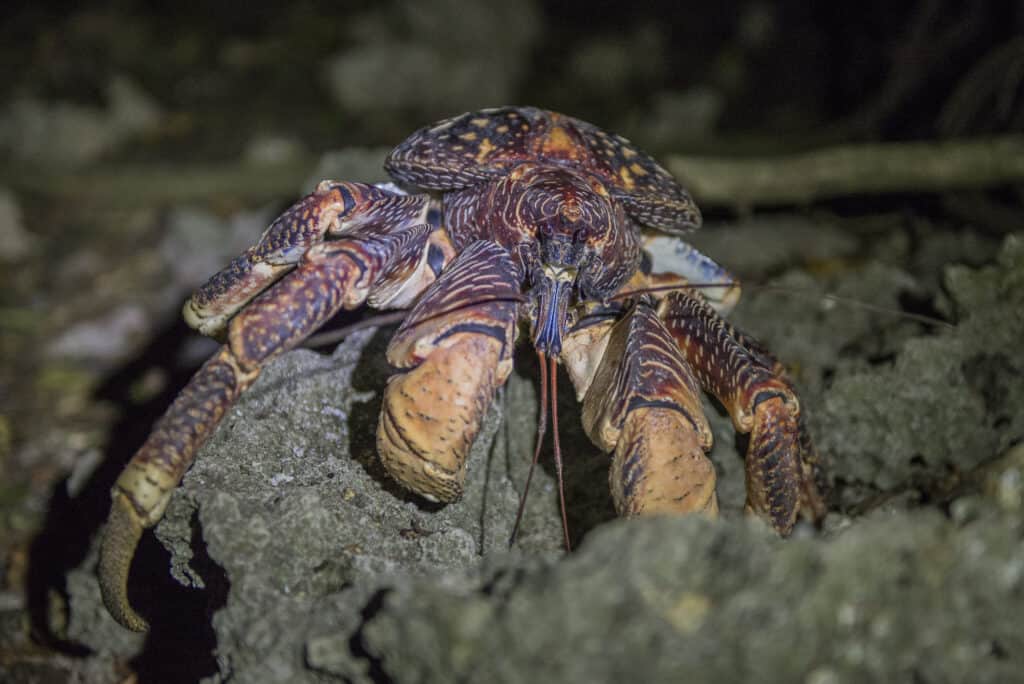
You can find carbonate spires in the Mid-Atlantic Ridge.
©NOAA Photo Library: expl2229 / CC BY 2.0 – Original / License
Mid-ocean ridges aren’t something scientists and the general public know a lot about. Little research or even mapping of this area under the ocean was not completed until around the 2010s. There’s a lot to learn about mid-ocean ridges still, but already, some important discoveries have been made.
Keep reading to learn more about mid-ocean ridges and the animals to discover there.
What Is a Mid-Ocean Ridge?
There’s only one mid-ocean ridge in the ocean. Despite being underwater, it’s the longest chain of mountains on earth. It stretches to nearly 40,390 miles long. About 90 percent of the ridge is entirely underwater, deep in the ocean. On average, the top of the ridge is 8,200 feet below sea level.
The only place it reaches the surface is in Iceland. For the rest of the world, it’s well below the ocean.
Technically, though the mid-ocean ridge is one long trail of mountains below the surface, it is broken into three ridges by scientists to help identify different areas. The three ridges are the Mid-Atlantic Ridge, the East Pacific Rise, and the Southeast Indian Ridge. Some break it down even further, including the Central Indian Ridge, the Southwest Indian Ridge, the Juan de Fuca Ridge, and the East Atlantic Ridge.
Is the Mid-Ocean Ridge Important?
Knowledge about the mid-ocean ridge is sadly lacking. Until the 2010s, there were no accurate maps. Now that some scientists are focusing their research on the ridge, it’s believed that it is important at least geologically. Some research has also found that it may have unique ecosystems for some animals. Watching and observing the behaviors of this underwater mountain range allows scientists to get a better idea of how the earth’s natural process works.
But there’s still a lot to study. Even with the help of robots, and submersibles, only 0.1 percent of all of the ocean ridges have been studied. Like with much of the ocean, less is known about these ridges than planets in outer space.
Most of the ridge occurs along the plate boundary. This is where two tectonic plates are splitting apart and creating a new ocean floor. These plates spread apart at a rate of somewhere between 1 centimeter and 20 centimeters a year.
Eruptions
Large volcanic eruptions usually follow as the plates separate further. There have been times when the separation led to natural disasters in Iceland. For example, in 1783, the part of the mountain ridge above sea level in Iceland known as Laki erupted.
Over three cubic miles worth of lava released from these mountain ridges. While this doesn’t sound like a lot, it is enough to cover all of the interstates in the US to a depth of 32 feet. In addition to the lava, 50 million tons of sulfur dioxide were released. This caused a loss of crops and death for many of the people living in Iceland.
Most of the eruptions that come from the mid-ocean ridge are deep underwater, though. Because they are so deep under the water, many aren’t even noticed unless a scientist is specifically looking for them.
Animals That Live Near the Mid-Ocean Ridge

Some animals along the ocean ridge may be ones you’re familiar with, but not all of them.
©iStock.com/Riccardo Maywald
There are hundreds of thousands of animals that depend on mid-ocean ridges, made up of thousands of different species. The research done so far on the mid-ocean ridge showed such diversity that scientists managed to convince governments of the importance of preventing bottom fishing along the ridge that could destroy important environments for rare and unique animals.
Traveling Species
Because there’s such a range in depth of these mountains, it makes sense to expect a wide range of animals as well. Based on what little scientists know about the mid-ocean ridge, there are at least 1,000 species on, in, and near the mid-ocean ridge.
From what little studies have been done, it’s estimated that at least 30 of the animals they observed in the area were new species not yet categorized. Most animals reside where the cold and warm water meet up, but life is found in every crevice and at every level of the mid-ocean ridges.
Some animals you’ll find around mid-ocean ridges include:
Endemic Species
Because the mid-ocean ridge spreads so far, there are quite a few marine animals (and even a few terrestrial animals in Iceland) that live in or near the mid-ocean ridge. What’s really interesting, however, is the number of endemic species.
For those that don’t know, endemic means animals that only live in one certain area. There are over 300 endemic species along the mid-ocean ridge. These are animals that depend on the ridge and would likely go extinct if something ever happened to these underwater mountains.
Crabs, shrimp, clams, corals, and tubeworms are examples of some of the endemic species. One in particular has gained a lot of attention, named the red-tipped tubeworm. Many of these animals live near the vents where hot air and liquid sulfides escape from under the earth.
Do you remember when you were in school and taught that all animals need oxygen to survive? These animals have adapted to use something other than oxygen. They are completely separate ecosystems than you’re used to with other animals. Most of the animals that are down near these vents rely on bacteria that get their energy from the minerals that escape the vents, and not from sunlight and oxygen.
The photo featured at the top of this post is © Johan Holmdahl/iStock via Getty Images
Thank you for reading! Have some feedback for us? Contact the AZ Animals editorial team.







